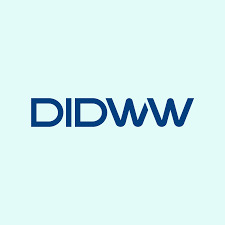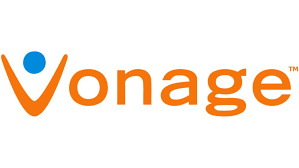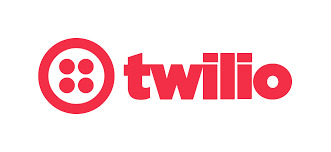#Voip Software
Explore tagged Tumblr posts
Text
VoIP Development 101: Building Reliable VoIP Software Solutions

VoIP changed everything about business communications, turning out to be the perfect and affordable alternative to traditional phone services. Since effective communication is nowadays in higher demand, VoIP development has become one of the prime concerns for companies willing to provide internal improvement to their communications infrastructure. The current blog describes the basics of developing VoIP, with significant steps toward creating robust VoIP software solutions that meet contemporary business challenges with efficiency.
Understanding VoIP Development
VoIP development involves creating software and systems that will allow voice communication over the Internet. VoIP technology, instead of using conventional telephonic lines, converts voice signals into digital packets and transmits them over IP networks. This, in turn, will help the users to make voice calls and video conferencing or send any type of multimedia messages with the help of internet-based platforms.
A well-implemented VoIP software development ensures functional, scalable, and secure solutions thereafter. Here’s how businesses build robust VoIP systems to support seamless communication.
Planning Your VoIP Software Development
The first stage of VoIP development is the need to strategize on the system, based on specific business needs. Businesses have to identify, before the beginning of development, the target audience, scales of communication networks, and required features to provide good performance. Certain key features to consider may include call routing, video conferencing, IVR, and call recording.
These, therefore, should be well understood and form parameters upon which the development will take place, ensuring that the VoIP solution is aimed at meeting organizational communication objectives.
Choosing the Right VoIP Protocols
Choosing the right VoIP protocol is integral for ensuring robust VoIP software solutions. Two well-known protocols in this regard are SIP and H.323. On many occasions, SIP might be considered for modern VoIP solution facilitates because of its flexibility and greater compatibility with a wide range of devices and applications.
Another important issue is the selection of codecs, which compress the voice signals and decompress them during transmission. Some commonly used codecs in the VoIP development process are G.711, g.729, and Opus. Only a proper selection of codecs will assure superior and good call quality with minimum usage of bandwidth.
Implement the Core VoIP Features
In the process of development, core features of VoIP software should be implemented necessary for providing functionalities and enhancing user experience:
Routing and forwarding call: Mechanisms for effective call routing ensure that a call is forwarded to the right personnel or department so that there is minimal response time, thereby enhancing customer satisfaction.
Interactive Voice Response: IVR systems reroute callers through automated menus for the called party to direct them to the information or correct contact.
Call Recording: The recording of calls avails to businesses critical insight into customer interactions and satisfies their compliance requirements.
Video Conferencing: With the addition of video conferencing to your VoIP solution, face-to-face collaboration, which is easy in a physical work environment, becomes seamlessly possible.
4. Prioritizing Security in VoIP Development
Security to Be Considered During VoIP Development Security is the number one VoIP developers’ priority. Among many types, a few threats for which VoIP networks could be attacked are eavesdropping, interceptions, and Dos. Due to this powerful encryption is needed for voice data protection to ensure the security of communication, such as mainly using SRTP and TLS.
Additionally, Session Border Controllers (SBCs) can be used to monitor and control call traffic, preventing unauthorized access and maintaining network integrity.
5. Testing and Optimization
Testing is also acknowledged as a significant stage of VoIP development vis-à-vis identifying problems and goals for optimizations that would lead to an even better performance. Key areas to be tested include:
Call Quality: Audio and video have to be of high quality, with minimum jitter, latency, and packet loss.
Network Performance: Vary the network conditions to ensure the testing of the system for the purpose of optimizing bandwidth in order to be able to avoid dropped calls.
Scalability: The solution should be capable of handling more workload as the number of users increases, without affecting performance.
Conclusion
VoIP development, itself dynamic and subject to continuous change due to an increase in technology and demand, depends upon appropriateness in development practices, which include planning, choosing appropriate protocols, implementation of key features, ensuring the security of software, and thorough testing-a business would be able to build a scalable and reliable VOIP software solution.
Hire VoIP Developer for customized VoIP development services as per the needs of your business. We ensure frictionless integration and peak performance of your VoIP systems with our professional team.
#voip developer#voip solutions#hire VoIP developer#Voip Software#custom voip software#customized VoIP development#SBC solution
0 notes
Text

VoIP software development has transformed the way we communicate, offering innovative solutions that are cost-effective, flexible, and feature-rich. As technology continues to advance, the possibilities for VoIP are limitless. Developers must navigate the challenges of network reliability, security, and compatibility while keeping an eye on emerging trends such as AI integration, 5G connectivity, and UCaaS.
By staying informed and adapting to these changes, developers can create cutting-edge VoIP solutions that meet the evolving needs of users and businesses. The future of VoIP software development is bright, promising continued innovation and enhanced communication experiences for all.
#voip#voip software#voip software development#voip solutions#voip system#voip technology#voip services
0 notes
Text

*astTECS offers world-class enterprise unified communication solutions based on Open Source Tech. We provide IP PBX, CCD, IVR, VoIP minutes, Voice logger, PA Systems, CRM solutions & more.
2 notes
·
View notes
Text
Digital Architects: Crafting Success Stories in a Connected World

In an era where every interaction leaves a digital footprint, building a memorable brand online requires more than just presence—it demands precision, strategy, and creativity. That’s where a results-driven digital marketing agency steps in—not just as a service provider, but as a digital architect shaping the future of your brand.
Success in the connected world hinges on your ability to engage the right audience with the right message at the right time. With the landscape constantly evolving, brands must move beyond templates and trend-chasing. Instead, they need creative digital solutions tailored to their audience and aligned with business goals. From personalized content strategies to immersive campaigns, these solutions turn clicks into conversations and browsers into loyal customers.
Partnering with a digital marketing agency gives brands access to a team that understands data, design, and digital storytelling. Their role is to bridge the gap between strategy and execution—translating ideas into platforms that scale, convert, and retain.
👉 Want to understand what drives online trust and visibility? Explore Google’s Search Quality Evaluator Guidelines for insight into how relevance, authority, and user focus build lasting digital success.
The brands that lead tomorrow are already investing in creative digital solutions today. With the right digital architects by your side, your next success story could be one strategy away.
0 notes
Text

24/7 Answering Service for Businesses | Intelliverse Customer Support
Never miss a lead again with Intelliverse’s always-on answering service. Perfect for doctors, lawyers, real estate agents, and more, our 24/7 support keeps your business responsive and your leads engaged—even when you're offline. Visit us for more info!
#lead management system#lead management tool#best text blast service#best answering service#best voip for business#lead management and sales software#best power dialer software#sales management software#sales automation#sales tracking software#cloud telephony in texas#cloud telephony in plano#tracking app for sales team#best app for sales tracking
0 notes
Text

Hi !... Hello amazing clients.. Get the best communication solutions for your business! We offer a wide range of services to help you stay connected with your customers and team. We Offer Global DID Numbers Call center setup Phone system configuration setup Tollfree number SIP Trunking Auto Dialer Inbound/Outbound Calls IVR SYSTEM setup Trusted by Industry Telnyx | Vonage | Twilio | Plivo | DIDWW | Agora | 3cx and more Contact us today




Hi !... Hello amazing clients.. Get the best communication solutions for your business! We offer a wide range of services to help you stay connected with your customers and team. We Offer Global DID Numbers Call center setup Phone system configuration setup Tollfree number SIP Trunking Auto Dialer Inbound/Outbound Calls IVR SYSTEM setup Trusted by Industry Telnyx | Vonage | Twilio | Plivo | DIDWW | Agora | 3cx and more Contact us today
#911 abc#andor#animation#arcane#art#artists on tumblr#artwork#cats of tumblr#conclave#cookie run kingdom#3cx#call center#voip providers#voip#voipsolutions#voip services#voip phone system#software#telecom
1 note
·
View note
Text

Call Center Solutions Dubai
Upgrade your communication with our IP telephony solutions. Explore call center software, IVR systems, and VoIP business telephone systems for smarter, efficient calls.
#ip telephony solutions#ip telephony service#call center solutions#call center software#voip business telephone system#Interactive Voice Response ivr#intelligent call routing system#IP telephony systems#IVR Solutions#cisco ip phone system#grandstream phone system
0 notes
Text
Integrating AI Call Transcription into Your VoIP or CRM System
In today’s hyper-connected business environment, customer communication is one of the most valuable assets a company possesses. Every sales call, support ticket, or service request contains rich data that can improve business processes—if captured and analyzed properly. This is where AI call transcription becomes a game changer. By converting voice conversations into searchable, structured text, businesses can unlock powerful insights. The real value, however, comes when these capabilities are integrated directly into VoIP and CRM systems, streamlining operations and enhancing customer experiences.
Why AI Call Transcription Matters
AI call transcription leverages advanced technologies such as Automatic Speech Recognition (ASR) and Natural Language Processing (NLP) to convert real-time or recorded voice conversations into text. These transcripts can then be used for:
Compliance and auditing
Agent performance evaluation
Customer sentiment analysis
CRM data enrichment
Automated note-taking
Keyword tracking and lead scoring
Traditionally, analyzing calls was a manual and time-consuming task. AI makes this process scalable and real-time.
Key Components of AI Call Transcription Systems
Before diving into integration, it’s essential to understand the key components of an AI transcription pipeline:
Speech-to-Text Engine (ASR): Converts audio to raw text.
Speaker Diarization: Identifies and separates different speakers.
Timestamping: Tags text with time information for playback syncing.
Language Modeling: Uses NLP to enhance context, punctuation, and accuracy.
Post-processing Modules: Cleans up the transcript for readability.
APIs/SDKs: Interface for integration with external systems like CRMs or VoIP platforms.
Common Use Cases for VoIP + CRM + AI Transcription
The integration of AI transcription with VoIP and CRM platforms opens up a wide range of operational enhancements:
Sales teams: Automatically log conversations, extract deal-related data, and trigger follow-up tasks.
Customer support: Analyze tone, keywords, and escalation patterns for better agent training.
Compliance teams: Use searchable transcripts to verify adherence to legal and regulatory requirements.
Marketing teams: Mine conversation data for campaign insights, objections, and buying signals.
Step-by-Step: Integrating AI Call Transcription into VoIP Systems
Step 1: Capture the Audio Stream
Most modern VoIP systems like Twilio, RingCentral, Zoom Phone, or Aircall provide APIs or webhooks that allow you to:
Record calls in real time
Access audio streams post-call
Configure cloud storage for call files (MP3, WAV)
Ensure that you're adhering to legal and privacy regulations such as GDPR or HIPAA when capturing and storing call data.
Step 2: Choose an AI Transcription Provider
Several commercial and open-source options exist, including:
Google Speech-to-Text
AWS Transcribe
Microsoft Azure Speech
AssemblyAI
Deepgram
Whisper by OpenAI (open-source)
When selecting a provider, evaluate:
Language support
Real-time vs. batch processing capabilities
Accuracy in noisy environments
Speaker diarization support
API response latency
Security/compliance features
Step 3: Transcribe the Audio
Using the API of your chosen ASR provider, submit the call recording. Many platforms allow streaming input for real-time use cases, or you can upload an audio file for asynchronous transcription.
Here’s a basic flow using an API:
python
CopyEdit
import requests
response = requests.post(
"https://api.transcriptionprovider.com/v1/transcribe",
headers={"Authorization": "Bearer YOUR_API_KEY"},
json={"audio_url": "https://storage.yourvoip.com/call123.wav"}
)
transcript = response.json()
The returned transcript typically includes speaker turns, timestamps, and a confidence score.
Step-by-Step: Integrating Transcription with CRM Systems
Once you’ve obtained the transcription, you can inject it into your CRM platform (e.g., Salesforce, HubSpot, Zoho, GoHighLevel) using their APIs.
Step 4: Map Transcripts to CRM Records
You’ll need to determine where and how transcripts should appear in your CRM:
Contact record timeline
Activity or task notes
Custom transcription field
Opportunity or deal notes
For example, in HubSpot:
python
CopyEdit
requests.post(
"https://api.hubapi.com/engagements/v1/engagements",
headers={"Authorization": "Bearer YOUR_HUBSPOT_TOKEN"},
json={
"engagement": {"active": True, "type": "NOTE"},
"associations": {"contactIds": [contact_id]},
"metadata": {"body": transcript_text}
}
)
Step 5: Automate Trigger-Based Actions
You can automate workflows based on keywords or intent in the transcript, such as:
Create follow-up tasks if "schedule demo" is mentioned
Alert a manager if "cancel account" is detected
Move deal stage if certain intent phrases are spoken
This is where NLP tagging or intent classification models can add value.
Advanced Features and Enhancements
1. Sentiment Analysis
Apply sentiment models to gauge caller mood and flag negative experiences for review.
2. Custom Vocabulary
Teach the transcription engine brand-specific terms, product names, or industry jargon for better accuracy.
3. Voice Biometrics
Authenticate speakers based on voiceprints for added security.
4. Real-Time Transcription
Show live captions during calls or video meetings for accessibility and note-taking.
Challenges to Consider
Privacy & Consent: Ensure callers are aware that calls are recorded and transcribed.
Data Storage: Securely store transcripts, especially when handling sensitive data.
Accuracy Limitations: Background noise, accents, or low-quality audio can degrade results.
System Compatibility: Some CRMs may require custom middleware or third-party plugins for integration.
Tools That Make It Easy
Zapier/Integromat: For non-developers to connect transcription services with CRMs.
Webhooks: Trigger events based on call status or new transcriptions.
CRM Plugins: Some platforms offer native transcription integrations.
Final Thoughts
Integrating AI call transcription into your VoIP and CRM systems can significantly boost your team’s productivity, improve customer relationships, and offer new layers of business intelligence. As the technology matures and becomes more accessible, now is the right time to embrace it.
With the right strategy and tools in place, what used to be fleeting conversations can now become a core part of your data-driven decision-making process.

#AI call transcription#VoIP integration#CRM integration#Speech-to-text software#Call transcription software#Real-time transcription#VoIP call recording#CRM automation#Customer call insights#Voice analytics#AI transcription for sales calls#Transcription in customer support#CRM call log automation#Automatic call summary#AI speech recognition tools#Sales call transcript analysis#Customer service call transcription#AI voice to text CRM#Call center compliance tools#Conversation intelligence software
0 notes
Text
Your VoIP Billing Delays Are Costing You — AI Can Fix That
VoIP billing is complex and time-consuming. Traditional tools just don’t cut it anymore. Automation and AI are game-changers — boosting accuracy, cutting errors, and improving forecasting. For VoIP providers, from startups to telecom giants, AI-powered billing means proactive control, compliance, and clear revenue insights. Manual systems can’t keep up with today’s evolving billing models and tax rules. We specialize in custom VoIP billing solutions that integrate AI and automation for next-level performance. Ready to simplify your billing and scale your business? Let’s connect!
0 notes
Text
Integration of WebRTC with FreeSwitch for Multi-Tenant IP PBX

The powerful Integration of WebRTC with FreeSwitch allows developers to design next-gen and scalable communication solutions such as PBX (Private Branch Exchange), Call Center Solutions and many more. This combination overcomes the drawbacks of traditional telephones while bringing modern web-based communication.
Using WebRTC and FreeSwitch solutions, Vindaloo Softtech has designed top-notch products such as PepperPBX and CallCentr8. Interestingly, with the integration of WebRTC with FreeSWITCH, VoIP calling has become streamlined through multi-tenant IP PBX systems.
In the absence of this integration, organizations face fragmented communication systems that require IP Phones to make calls. These complexities result in compatibility issues, additional costs, and complex setups. However, this integration has bridged the gap between IP phones and modern PBX systems.
What is PBX?
A PBX (Private Branch Exchange) is a phone system that businesses use to manage calls. It connects calls between employees, local lines, and the public phone network. Instead of giving each employee their own phone line, the PBX allows everyone to share a few external lines. This helps save money and comes with features like call conferencing, follow me, IVR, Time condition, call routing, voicemail, and managing multiple calls at once. Its main goal is to reduce the cost of needing a separate phone line for each person.
Introducing WebRTC
WebRTC (Web Real-Time Communication) is an open-source project that gives the means to real-time communication by supporting video conferencing, voice calls, and data sharing. This project facilitates RTC directly between all modern web browsers and other supported devices without requiring additional plugins or applications.
The Software Developers use the APIs written in Javascript for peer-to-peer communication, which happens directly between users’ devices without the need for an intermediary server, this way it ensures faster data exchange and reduces latency. Vindaloo Softtech, a custom VoIP application & WebRTC development company, has been offering custom WebRTC development services for years.
What is FreeSwitch?
FreeSwitch, an open-source carrier-grade telephony platform is a backbone for VoIP (Voice over Internet Protocol) software. This platform is highly scalable as business demands and can be installed on any cloud-based platform or on-premises. FreeSwitch is designed to route and interconnect communication protocols like SIP (Session Initiation Protocol), WebRTC, and others. This allows the creation of robust voice, video, and messaging systems. Hire Vindaloo Softtech for FreeSWITCH development services to reap top-notch features.
Read Also: The Future of FreeSWITCH Development – Trends to Watch Out For
Make VoIP Calls with FreeSwitch and WebRTC
FreeSwitch acts as the media server that handles routing and managing communication, while WebRTC allows real-time communication directly within web browsers. FreeSwitch natively supports Webrtc. When integrated, these two technologies enable businesses to make and manage VoIP calls through a cloud-based system that operates via the Internet.
The integration of WebRTC with FreeSWITCH allows us to build a multi-tenant IP PBX solution, a cloud-based system that manages VoIP calls from anywhere without relying on specific hardware or infrastructure. WebRTC clients use the WS/WSS protocol to communicate with FreeSWITCH via the SIP protocol, usually with SIP over WebSockets. It allows multiple clients or tenants to operate under a single PBX infrastructure while keeping their operations completely separate. It is a unified and cost-effective solution that enhances modern communication and accessibility.
What does a WebRTC Phone feature in a multi-tenant PBX system do for your business?
Using the FreeSwitch and WebRTC solution, Vindaloo Softtech, a leading VoIP software development company has designed the WebPhone feature in PepperPBX, a ready-to-deploy and secure PBX server. With the Webphone, you do not require any third-party softphone and IP or desk phones.
We have developed the below features using WebRTC and FreeSwitch for our PBX system,
Call transfer
DND support
Call Forward
Conferencing
Access Voicemails (Read & Total Count)
Call waiting
Multi Call Management
What Extra Do You Get With PepperPBX?
Total Control with Built-in Firewall: Manage your multi-tenant system with a smart dashboard and firewall. Giving you full control and security to block or allow services and ports with just a few clicks.
Robust Security: It features top-notch security with multi-factor authentication and a user-friendly interface. This system is secure and simple to manage, following trusted industry standards.
Simplified Customer Interactions: Features like IVR menus and call queuing make customer interactions seamless. It effortlessly handles inbound call centres and monitors calls.
Cloud Access: You get complete access to your system at any time from anywhere with a cloud-based platform. Through this, it ensures business continuity no matter where you are.
Specified user portal: This ensures effortless user management with direct login portals for Super Admin, Tenant Admin, and end users.
Why Should You Choose Multi-tenant PBX – PepperPBX?
Ready to Deploy
Pay Once, it’s Cost-effective
No Hidden Charges
Outstanding Scalability
Advanced Feature-packed
Secure with industry-standard protocols
User-Friendly Interface
Vindaloo Softtech, a custom VoIP development service provider, boosts features like WebRTC in a Multi-Tenant PBX System on the client’s requirement. Connect us to team up and take advantage of Custom Webrtc app development services, FreeSWITCH development solutions and a Multi-tenant PBX system.
#Custom VoIP Development#FreeSWITCH development#FreeSWITCH development services#IP PBX#Multi Tenant IP PBX Solution#pbx server#VoIP PBX systems#VoIP Software Development Company#WebRTC Development#WebRTC development services#WebRTC Solution#WebRTC solution development
0 notes
Text
How VoIP Call Tracking Works & The Best Solutions for Your Business

Imagine spending thousands of dollars on marketing campaigns only to have no idea which ones are driving actual sales. Sounds frustrating, right? Businesses receive hundreds or even thousands of phone calls daily, but without a way to track them, they’re left in the dark about which marketing efforts are working and which are wasting money.
This is where VoIP call tracking comes into play!
It allows businesses to track incoming calls, analyze caller behavior, and optimize sales and marketing efforts based on real data. Whether you're running a digital marketing campaign, managing a sales team, or handling customer service calls, VoIP call tracking gives you complete control over your call data.
But how does it actually work? How is it different from traditional call tracking? And most importantly, how can you use it to drive real business growth?
Let’s dive in.
What is VoIP Call Tracking?
VoIP (Voice over Internet Protocol) call tracking is a system that lets businesses track and analyze phone calls made over the internet. Instead of relying on traditional landlines, VoIP call tracking assigns unique virtual phone numbers to different marketing channels, enabling businesses to see exactly where their calls are coming from.
For example, if a company runs Google Ads, Facebook Ads, and email marketing campaigns, VoIP call tracking can assign separate phone numbers to each. Whenever a customer calls, the business knows which campaign led to the call, helping them optimize their marketing strategy and maximize ROI.
Unlike traditional phone systems, VoIP-based tracking provides detailed insights such as:
Call source – Which ad, webpage, or campaign led to the call?
Call duration and frequency – How long are customers staying on the line, and how often are they calling?
Caller location – Where are most of the calls coming from?
Call recordings and transcriptions – What are customers asking, and how can businesses improve their responses?
With these insights, companies can make smarter decisions, refine their marketing strategies, and improve customer interactions.
How Does VoIP Call Tracking Work?
VoIP call tracking operates through a combination of dynamic number insertion (DNI), call routing, and analytics integration. Let’s break it down:
1. Dynamic Number Insertion (DNI)
DNI is a technology that assigns unique phone numbers to different marketing channels. When a visitor lands on your website, they see a phone number specific to their source—whether it’s a Google ad, a Facebook campaign, or an organic search result.
For example:
A customer who clicks on your Google Ad sees the number (123) 456-7890.
Another customer who finds your website through SEO sees (987) 654-3210.
A visitor coming from Facebook Ads sees (555) 111-2222.
Since each caller dials a different number, businesses can precisely track which marketing efforts are generating the most calls.
2. Call Routing and Forwarding
Once a customer dials a tracking number, the system routes the call to the appropriate department or salesperson. This ensures that calls are directed based on the caller’s intent, improving response times and customer satisfaction.
For instance, a real estate agency can route:
Calls from a “Buy Property” ad to their sales team.
Calls from a “List Your Home” campaign to their property listing team.
Calls from the “Support” page to their customer service desk.
This eliminates unnecessary call transfers, reducing customer frustration and improving engagement.
3. Call Data Collection and Analytics
Once a call is completed, VoIP call tracking software logs essential details such as:
Call duration
Caller’s phone number and location
Time and date of the call
Call outcome (missed, answered, converted)
Some advanced VoIP call tracking solutions even provide call recordings and AI-powered transcriptions. These features allow businesses to analyze conversations, identify customer pain points, and refine their sales approach.
For example, if a company notices that many callers are asking about pricing before purchasing, they can train sales agents to highlight value propositions early in the conversation.
Why Businesses Need VoIP Call Tracking
1. Improve Marketing ROI
Without call tracking, businesses guess which marketing channels work best. VoIP call tracking removes the guesswork by showing which campaigns drive real phone calls and conversions.
For example, a car dealership running ads on Google, Facebook, and local billboards can analyze which source generates the most calls. If Google Ads drive 70% of the calls but billboards generate only 5%, the business can allocate more budget to digital marketing and scale its best-performing campaigns.
2. Optimize Sales Performance
Tracking sales calls helps businesses understand which agents are closing deals and which need training. By reviewing call recordings, managers can:
Identify top-performing sales reps and their techniques.
Provide coaching to employees struggling with objections.
Refine call scripts to improve engagement.
For example, if an insurance company notices that calls lasting over three minutes have a higher conversion rate, they can train agents to keep customers engaged longer to improve closing rates.
3. Enhance Customer Experience
Customers hate repeating themselves. VoIP call tracking integrates with CRMs, allowing agents to see a caller’s history before answering.
For example, a bank’s support team can instantly access a caller’s previous conversations about a loan application, saving time and reducing frustration.
4. Reduce Operational Costs
Unlike traditional phone systems that require expensive infrastructure, VoIP call tracking operates online, making it:
Cost-effective – No need for multiple landlines or on-premise hardware.
Scalable – Businesses can add new numbers instantly for new campaigns.
Remote-friendly – Agents can handle calls from anywhere using an internet connection.
5. Gain Competitive Insights
Understanding how competitors handle calls can be a game-changer. Some VoIP tracking solutions analyze industry trends and benchmark business performance against competitors.
For example, if a retail company notices that industry-standard call wait times are under 30 seconds, but their business averages over 1 minute, they know they need to improve response times to stay competitive.
Implementing VoIP Call Tracking for Maximum Results
If you’re considering VoIP call tracking, here’s how to get started:
1. Define Your Goals
What do you want to achieve? Are you looking to track marketing ROI, improve sales, or enhance customer service? Setting clear objectives helps you choose the right call tracking setup.
2. Set Up Dynamic Number Insertion
Ensure your website and marketing campaigns use unique VoIP tracking numbers for accurate data collection.
3. Train Your Sales and Support Teams
Make sure employees understand how to use call tracking insights to improve their conversations and close more deals.
4. Integrate Call Tracking with Other Business Tools
Sync VoIP call tracking system with CRM, analytics platforms, and ad tracking tools to create a seamless workflow.
5. Analyze and Optimize
Regularly review call tracking data to:
Identify high-converting marketing channels.
Optimize ad spend.
Improve agent performance and customer service.
Conclusion
VoIP call tracking isn’t just a tool, it’s a strategic advantage. It provides businesses with real-time insights into marketing performance, sales efficiency, and customer interactions, allowing them to make data-driven decisions.
By implementing VoIP call tracking, businesses can stop relying on guesswork and start making smarter, more profitable decisions. Whether you’re a small business looking to improve sales efficiency or a large enterprise managing nationwide marketing campaigns, VoIP call tracking is the key to unlocking growth and maximizing customer engagement.
0 notes
Text
voice based otp services software in india
Sinch provides voice-based OTP services software in India, offering secure and efficient two-factor authentication solutions. Businesses can deliver OTPs to users via phone using Sinch's Voice OTP service. That way, authentication will not be out of reach for those in an area with limited internet connectivity. The service is designed for high reliability and calability and can be used in the banking, e-commerce, and telecom industries. By leveraging Sinch's global communication platform, businesses can offer an easy, secure, and cost-effective way to authenticate users while maintaining privacy and regulations.
#voice call#voice api#best voip for small business#best business voip providers#business voice solutions#voip providers#voice based otp services software in india
0 notes
Text

Hi !... Hello amazing clients.. Get the best communication solutions for your business! We offer a wide range of services to help you stay connected with your customers and team. We Offer Global DID Numbers Call center setup Phone system configuration setup Tollfree number SIP Trunking Auto Dialer Inbound/Outbound Calls IVR SYSTEM setup Trusted by Industry Telnyx | Vonage | Twilio | Plivo | DIDWW | Agora | 3cx and more Contact us today
#911 abc#andor#animation#arcane#art#artists on tumblr#artwork#cats of tumblr#conclave#cookie run kingdom#3cx#call center#voip phone system#voip#voipsolutions#voip providers#voip services#software#telecom
0 notes
Text

IP Telephony Solutions | Call Center Software, IVR & VoIP Systems
Upgrade your communication with our IP telephony solutions. Explore call center software, IVR systems, and VoIP business telephone systems for smarter, efficient calls.
#ip telephony solutions#ip telephony service#call center solutions#call center software#voip business telephone system#Interactive Voice Response ivr#intelligent call routing system#IP telephony systems#IVR Solutions#cisco ip phone system#grandstream phone system
0 notes